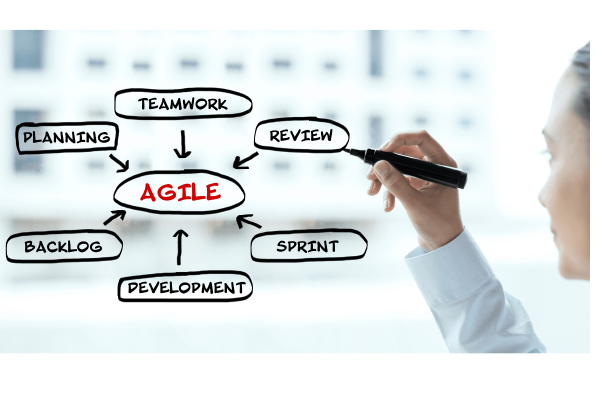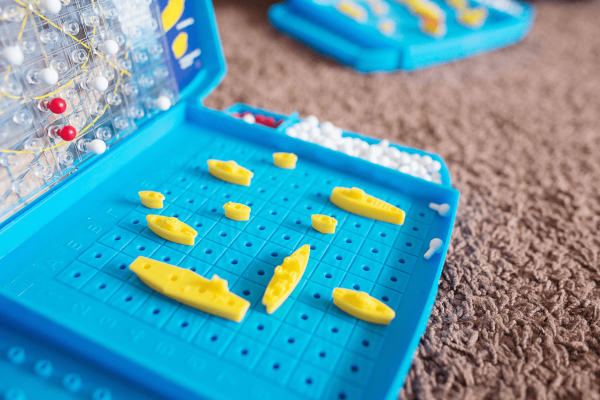For most companies, one of the most challenging tasks is creating a good culture and encouraging employees to communicate and work well together. After all, the working environment should be about the work itself and the relationships between employees.
To achieve this, many companies are now using agile methodology to promote better collaboration and communication within the workplace. Part of it is something called conversation agile games.
Conversation games can help team members identify and address problems that may go unnoticed quickly. These agile games can help to build rapport and trust in each team member, which is essential for successful agile project delivery.
In this blog post, we will share the fundamentals of agile games and explore their benefits so that you can make an informed decision about whether or not they suit your team.

What are Conversation Games?
The term “conversation games” refers to companies’ techniques to improve communication and collaboration within agile software development teams. These team-building games are typically done during face-to-face meetings or online.
Conversation games serve as a way to break the ice among individuals or to help team members get to know each other better. These team development activities encourage each team member to communicate to solve problems or complete tasks.

Agile games typically involve verbal and nonverbal communication, and they often require group members to work together closely to achieve a successful outcome. Conversation games in agile are a type of meeting game that businesses can use to help teams communicate more effectively and efficiently.
Popular Conversation Games in Agile
Battleship
It is a popular game to teach people about scrum principles. Two teams of equal size play the game. Each team has a board with several ships of different sizes. The game’s objective is to sink all of the other team’s ships.
Battleship teaches people about the importance of planning, estimation, and collaboration. The purpose of this fast-paced game is to teach people about iterative development and the ideas behind it. The aim is for individuals to realize that big plans are not advised in the first place.

Mechanics of the game
- There are two teams, each with its own “battleships sheet.” On this sheet, they will use dots to create their ships.
- Each team will have approximately two minutes to strategize where they would like to place their ships. Then, Team A gets five minutes upfront to plan its hits and update Team B on which of their ships sunk, missed hits, etc.
- Team B then gets 5 minutes to play each one of their hits, but this time with real-time feedback (regarding misses, hits, and sunken ships) from team A.
- The teams take turns guessing where the other team’s ships are located. When a ship is hit, it is marked on the board.
- The first team to sink the other team’s ships wins the game.
Ball Point Game
This game helps teams understand the agile production process and how to manage agile projects. Every team member needs to be self-organized and establish a clear process to play.

Not only does this game advocate for early feedback loops, but also the importance of teamwork skills such as self-organization and collaboration. Playing it allows you and your team to explore different communication patterns and learn to work together more efficiently. Plus, it’s a great way to have fun while promoting sustainable pace flow understanding.
Another benefit of the Ballpoint Game is that it teaches how to build trust in the team and individuals. The game also stresses the importance of inspecting, adapting, and reflecting on improving their work.
Mechanics:
- For two minutes, give the agile teams as many balls as possible. Each ball must go by each member of the team. To earn a point (per ball), ensure that the first person to obtain the ball is also the last to handle it.
- The team will get five iterations; before each one, they must estimate how many balls they believe will pass. They should also record the changes they made after each iteration.
- The next minute is spent passing around the table, and the final minute is used to write down the number of points earned and what the team learned.
The Marshmallow Game
The game emphasizes collaboration, innovation, and problem-solving skills. It teaches a cost-cutting method of risk management and the importance of continuous testing to minimize waste.
This project stresses the importance of prototypes and iterations while proving that success is often contingent upon close collaboration. It stimulates group innovation and creativity, helping everyone learn from one another.
From the Marshmallow game, the team will learn the importance of keeping information central to take a more holistic approach to achieve objectives.

Mechanics:
- Each team must construct the highest structure feasible from the supplies in the envelope to support their marshmallow. The marshmallow must be on top of the construction.
- During the construction of a tower, everyone begins at the same time and has 20 minutes to complete their creation.
- The facilitator should remind the teams of the rules several times throughout the meeting in case they need further explanation. To create a friendly competition, the facilitator should also call attention to groups doing exceptionally well or poorly.
- The team that builds the tallest, free-standing structure that can support the marshmallow wins the game.
The Lego Flow Game
The point of the Lego Flow Game is to have fun while exploring various ways processes can work. The goal is to build a Lego Advent Calendar item following these steps:
- Finding the next calendar number (analysis).
- Locating the right lego pieces (supply).
- Putting the ego item together (build).
- Making sure it’s done correctly and solidly built (accept).
The game’s objective is for the teams to discuss and analyze what worked and what was difficult with their strategy. Rather than showing that one route is superior to any other, the aim is to consider the benefits and drawbacks of various methods.

There are specific responsibilities for each step in the process – analysis, suppliers, builders, and acceptors – as well as a general manager and market reps. The game is played three times, each with its type of procedure: batch and phase are driven, time-boxed, and flow-based.
Mechanics:
Waterfall-like Round / Batch and Stage
In this six-minute round, teams must complete a pre-defined number of items set as the expected target. This number of items must be completed in each stage and then passed on to the next step entirely.
The Analyst can only move on to the next door after they have processed the current one and received an index card. This 5-step process must be completed before any further action is taken. All roles during this journey are specialist skills, so no worker may help another.
Scrum-like Round / Time-boxed
There are three pairs of 2-minute time boxes. Each team should guess or plan how many things they can accomplish within a given time box and then compare their performance to their prediction at the end.
When the time-box begins, when each item in a stage is complete, it can pass to the next stage. Primary specialties continue to apply, but teams may work together more collaboratively and help one another if they are not assigned anything. Rejected works may now be passed back and improved due to this collaboration.
At the end of a time limit, any partially completed items may be kept and worked on beginning with the following time limit. A team may undertake further work only after all their planned work has been completed and accepted.
Kanban-like / Flow-based
The third round is another six-minute single sequence. There’s no need to count how many things the team will be able to accomplish, but a work-in-progress (WIP) limit of one item per stage is imposed. This restriction covers tasks in progress and those completed and ready for work in the following stage.
In other words, when one stage of work is complete, the next stage can only begin working on their respective task once the previous stage approves.
For instance, the Supplier finishes their work on door number three. The team cannot move on door number four until the Builder downstream pulls and begins to work with door number three.
However, if there is nothing else for team members to do in their phase, they can help others in different phases. Any rejected works can be passed back up as well.
The Chocolate Bar Game
The game makes the team understand how to satisfy customers despite numerous constraints. It is a great way to teach the team about iterations, customer feedback, and continual learning. By playing this game, the whole team will understand how to incorporate customer feedback into their work.
The agile team will also develop a deep understanding of the product owners and the customers. It is great for creating conversations and analogies around the team’s obstacles in both personal and professional life.

Mechanics:
- Teams should select a Product Manager who will act as the Product Owner. The remainder of the team is the consumers.
- The goal of the Product Owner is to create a chocolate bar that appeals to the target market. The chocolate must taste great and be made from dark chocolate, milk chocolate, or white chocolate.
- While perfecting their product, teams can select from a range of fillings. Toppings and other special features also come into play, such as organic or gluten-free options that would satisfy a specialty market.
- After every iteration, the Project Manager gives the team feedback. Customers can show their approval by giving the creation a thumbs up. If they disapprove, customers give the chocolate bar a thumbs down.
- The team can better predict the needs before the next iteration by recording customer feedback and preferences for different chocolate bar fillings. Team members will continue to add or subtract different fillings and toppings until most customers are satisfied with their creations.
Benefits of Conversation Games in Agile
Builds rapport and trust among team members
By encouraging team members to interact playfully, agile games help break down barriers and foster a spirit of cooperation and trust. Conversation games can help team members to get to know each other better, building the foundation for a strong working relationship.
Encourages communication and collaboration
In an Agile environment, where team members often work together on complex projects, conversation games can help promote collaboration and understanding. Conversation games help team members to practice active listening and effective communication.
Team members will communicate effectively while working by playing conversation agile games, leading to better results.

Increases team engagement and enthusiasm
Conversation games can be a great way to break the ice and get people talking. They can also be fun to inject some competition and excitement into everyday work tasks.
When team members are actively engaged in their work, they are more likely to be productive and successful. Aside from increasing team engagement and enthusiasm, team-building activities will encourage people to speak up and share their ideas.
Improves the team’s creativity and problem-solving
Agile games are a fun and easy way to get the members to think creatively and work together to solve problems. In an Agile environment, where teams constantly need to be adaptable and quick-thinking, conversation games can be a valuable tool for sparking new ideas and helping team members to think outside the box.
And because they’re games, there’s no pressure, and the group can feel free to experiment and take risks without worrying about the consequences.
Conversation Games in Agile provide an opportunity for the team to relax and enjoy themselves while still being productive. These team-building games are valuable tools that businesses can use to improve communication and collaboration within teams and organizations.

Agile games are essential when warming up before starting a big project. It also allows the team to take a break from their work and return feeling more enthusiastic about their job.
For every organization, it is important to note that having fun is just as important as doing the job well.
What are the four values of agile?
- Individuals and Interactions Over Processes and Tools
- Working Software Over Comprehensive Documentation
- Customer Collaboration Over Contract Negotiation
- Responding to Change Over Following a Plan
What are the three pillars of scrum?
- Transparency
- Inspection ·
- Adaptation
